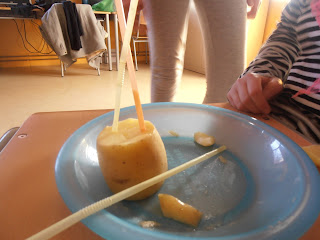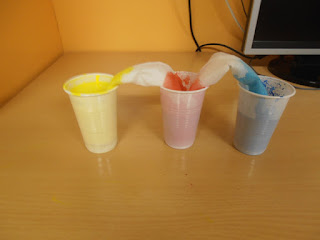- Water
- A clear plastic bottle
- Vegetable oil
- Food coloring
- Alka-Seltzer(or other tablets that fizz)
HOW TO DO IT;
- Pour water into the plastic bottle until it is around one quarter full
- Pour in vegetable oil
- Add food coloring
- Watch the food coloring mixing with the water
- Cut an Alka-Seltzer tablet and drop it into the bottle
- When the bubbling stops add another piece.
PROCESS:
RESULT:
MY OPINION:
I like this lamp of lava because is very funny and interesting!!!
BY ESTHER











































